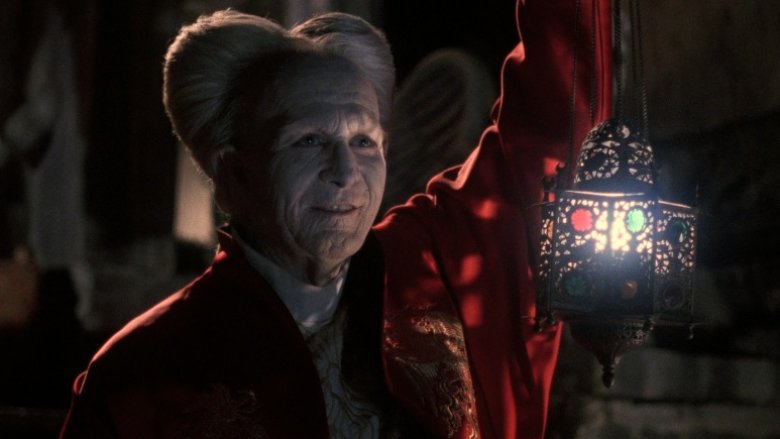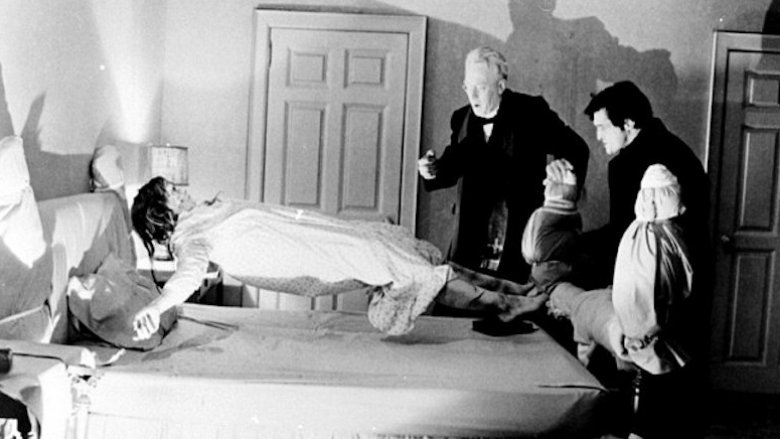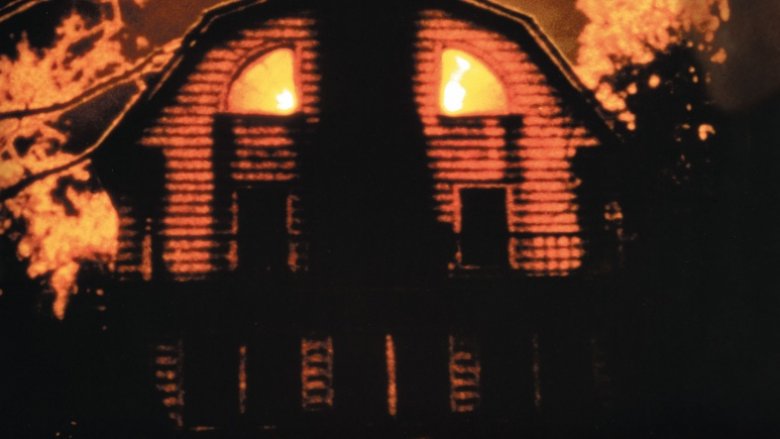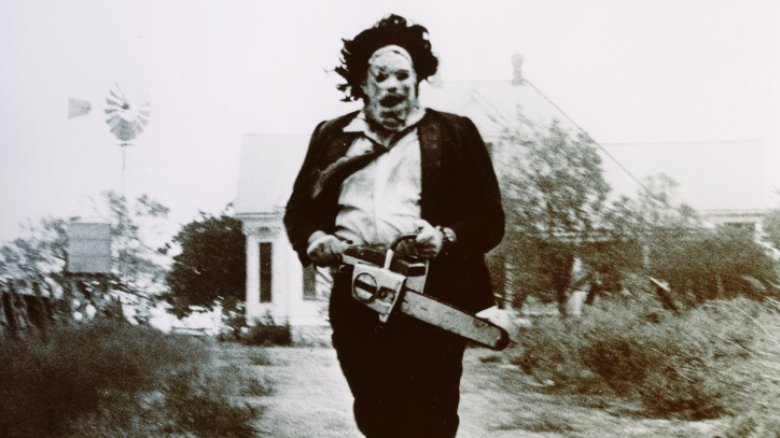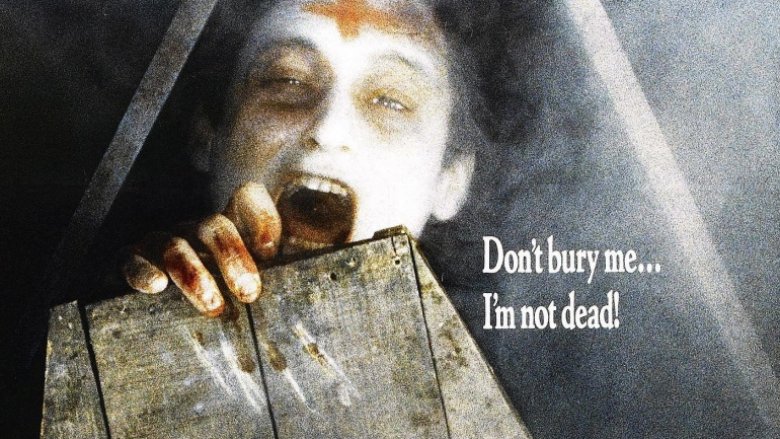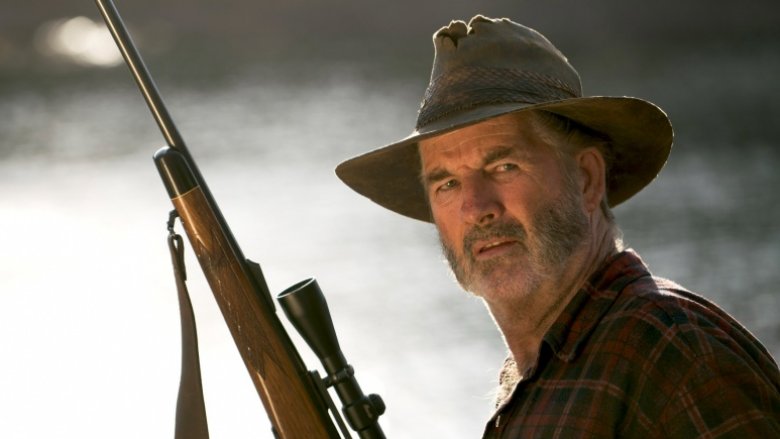Horror Movies Based On Even Scarier True Stories
We may receive a commission on purchases made from links.
"Based on a True Story": it's the oldest trick in Hollywood marketing, and horror fans have read variations on those words countless times. Whether a movie actually delivers scares on its "fact-based" premise is one of the great crapshoots of horror fandom, but the gimmick has been a pretty safe bet at the box office. The blurrier the line between fact and fiction, the bigger the potential scares—but sometimes, the stories behind the scenes are even more terrifying. From the pathological to the paranormal, here are few of the truly terrifying stories that inspired the genre's most memorable scares.
Dracula and Vlad the Impaler
Bram Stoker's classic story has been revisited countless times in cinema, making it some of the most beloved source material of all time, but until Francis Ford Coppola's film Bram Stoker's Dracula, the connection between Dracula and the historical figure Vlad Drac had never been depicted onscreen. If you think a pale, immortal vampire poised to suck your blood is scary, consider "Vlad the Impaler": the Transylvanian noble is thought to have tortured and executed as many as 100,000 peasants and civilians during his reign. Deeming the poor as "useless to society," he had them slowly impaled from rectum to cranium, and then hoisted publicly for display. So....which is scarier: the fang or the pole?
The Exorcist and the Case of Roland Doe
The Oscar-winning 1973 film The Exorcist was based on the 1949 possession of a Maryland boy named "Roland Doe," a boy who reportedly underwent an exhausting battery of exorcisms performed by Jesuit priests. While skeptics maintain that "Doe" was simply insane, the phenomenon of "demonic possession" has been traced to Biblical times and is taken very seriously by religious experts—and although neither spinning heads nor projectile vomit have been widely reported, levitations, shaking beds, and speaking in tongues have.
Green vomit aside, director William Friedkin claims his sole interest was to immortalize the events and circumstances surrounding Roland's case; in so doing, he created one of the most widely acclaimed horror movies of all time, It's the real-life mysteries that inspired it, however, that make it the most horrifying. Not scared yet? Consider that the demand for exorcisms has rapidly increased in recent years: in 2015, the Catholic Church reported having as many as 100 requests at any given time.
The Amityville Horror and the house at 112 Ocean Avenue
The exterior of the house at 112 Ocean Avenue in Amityville, Long Island, is an icon of the horror genre. Its architecture has been featured prominently in the marketing for The Amityville Horror films, and although each of the 14 unnecessary sequels have offered diminishing returns to the notorious fictional location, what transpired at the actual address is more horrific than anything depicted in the franchise.
It was there that 24 year-old Ron DeFeo brutally murdered his mother, father and four younger siblings with a shotgun in 1974. The hotly contested account in Jay Anson's book details the bizarre events that followed: the house reportedly stood empty for 13 months, until the Lutz family moved in—only to abruptly flee after 28 days, claiming they had been terrorized by paranormal phenomena. While Anson's account has drawn controversy, the house has been investigated extensively by paranormal investigators for 50 years. To divert droves of morbid tourists, subsequent owners remodeled the exterior, and 112 Ocean Avenue is no longer a listed address. The house still stands, however; in fact, the eerie chunk of real estate recently went back up for sale. Perhaps the new owners will provide us with more sequel fodder?
The Texas Chainsaw Massacre, Psycho, and Ed Gein
Some of the scariest and best-known characters in horror have been drawn from the pages of serial killer Ed Gein. Gein's grisly murder spree inspired Leatherface of The Texas Chainsaw Massacre, Norman Bates of Psycho, and Buffalo Bill of The Silence of the Lambs—to name just a few. It's hard to imagine these characters existing in the real world, but Gein's actual crimes were so heinous that he might be the most monstrous figure in American history.
The Gein family wasn't exactly a Norman Rockwell portrait to begin with. His father, and two brothers passed away early in his life. After the passing of his sole companion, his beloved mother, Gein lived alone in their rural Wisconsin farmhouse, and the mild-mannered handyman didn't attract much attention in the 12 years following her death. But when a neighboring hardware store owner disappeared in 1957, Gein came under suspicion, and a search of his property revealed the decapitated woman in a shed, splayed out like a pre-skinned deer. Inside the house, authorities found masks, wastebaskets and lampshades made from human skin, along with assorted human remains. Some of what was discovered is far too grisly to mention here, but suffice it to say, Gein's living room would make Leatherface blush. It was later determined that he'd been making late-night visits to nearby cemeteries, exhuming women who looked like his mother—whose room was found boarded up and completely untouched. Gein's story, even sans chainsaw, is truly the stuff of nightmares.
The Serpent and the Rainbow and Haitian Voodoo
As we all know, zombies are a fixture of horror—and pop culture at large. With Wes Craven's 1988 voodoo horror film The Serpent and the Rainbow, however, we find a very different kind of zombie: the story doesn't involve biting, infection or blood and guts apocalypse stuff, but the phenomenon of Haitian zombies is genuinely chilling. Craven's movie is loosely adapted from a nonfiction book of the same name by ethnobotanist Wade Davis, who outlined his expeditions to Haiti investigating the bizarre case of Clairvius Narcisse, a man who had reportedly "returned from the dead."
This strange story starts with his apparent death. According to Narcisse, he was administered a "pufferfish" toxin after offending a Bokor, or voodoo sorcerer. As a result of the poisoning, he collapsed and was determined to be dead, but he was actually conscious during the delivery of his death certificate, and witnessed his own burial from inside the casket. A Bokor recovered him from his grave two days after his funeral and gave him a "Datura" potion that allowed the Bokor to enslave Narcisse through perpetual administrations, and he was forced to work on a sugar plantation. Assumed dead for 18 years, Narcisse was finally released and returned to his village, where he was spotted by his sister.
The screen adaptation plays like a Craven horror flick, and the real scares are glossed over. However, Narcisse's story has been documented and supported by claims of countless Haitians. It's well known that voodoo has a corner on the revenge market, but being buried alive might is an unfathomable punishment.
Wolf Creek and the Australian Backpacker Murders
The 2005 slasher pic Wolf Creek drew a lot of audiences with its "true story" tagline, but the movie bares only a vague similarity to the events that inspired it. The character of Mick Taylor, played by John Jarrat, is likely based on Australian serial murderer Ivan Milat. Milat, known as the "Backpacker Killer," savagely murdered at least seven young tourists in the mid-'90s, hiding their bodies in an outback forest. Medical examinations determined injuries ranged from 35 stab wounds in one corpse to nine shots in the head of another. Other wounds, including strangulations and beatings, were inflicted post-mortem. The head of one victim was never found.
Unfortunately for Milat, one of his would-be victims escaped. The young backpacker reported that Milat had lured him with false hospitality, tried to bind him with rope, and shot at him when he broke free. The tourist positively identified Milat, and he was eventually found guilty of all seven murders (and suspected of many others). He was sentenced to seven consecutive life sentences, plus 18 years. The trope of the meandering young tourists and the charismatic psychopath is nothing new, but the backdrop of the vast and remote outback makes for a pretty chilling story, proving again that fact can indeed be stranger—and scarier—than fiction.
